
Solar Eclipse
Posted: 20 May 2012
I opened the observatory Sunday, 20 May 2012, at 1632 MST, 110°F, for the Solar Eclipse. The eclipse was to start at my location at 1730 MST, with a maximum eclipse of 82% at 1839 MST. As I did for the "Dry Run" on 17 May, I used the Meade 8" LX200-ACF with an Orion full-aperture solar filter and a Coronado PST mounted piggyback, the Meade ETX-90RA with a Coronado White Light Solar Filter for iPhone imaging, and the Nikon D7000 DSLR with a Thousand Oaks Solar Filter (made for the ETX-90). The Apple iPhone 4 was mounted on the ETX-90RA using the Magnilux MX-1 Afocal Adapter. I used the Nikon "ML-L3 Wireless Remote Control" for the D7000 DSLR and the Apple "Earphones with Remote and Mic" for the iPhone 4 as remote shutter releases. The iPhone "remote" works as a remote shutter release with the Camera app in iOS 5 by pressing the "+" button. The sky was clear with an occasional strong breeze, but nothing like the Red Flag Warning wind that was blowing during Thursday's Dry Run.
At 1645 MST, I viewed the sun in white light through the 8" telescope, 77X. Several small sunspots were visible. The view in the PST at 32X was very nice, with several small prominences and a nice long filament visible. Lots of other details were visible on the disk but I didn't take the time to study them. I then began setting up the ETX-90RA and camera tripod on the front patio. Here's the set up:
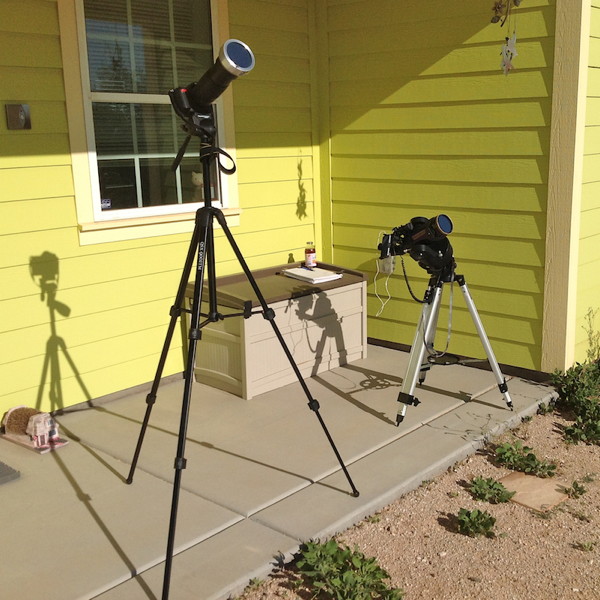
I began imaging at 1730 MST, taking photos every 10 minutes with the iPhone on the ETX-90 and with the D7000 DSLR on the camera tripod as a backup imager. I also took several images at mid-eclipse and a series of D7000 photos as the partially eclipsed sun set. As mid-eclipse approached, there was a slight darkening of the surrounding landscape, but after mid-eclipse, the brightning of the landscape was overcome by the dimming of the setting sun. I also took some interesting photos at mid-eclipse, showing the partially eclipsed sun.
After the sun set, I returned to the observatory. Viewed Venus in the 8", 77X. A nice thin crescent phase was visible.
Closed the observatory at 1942 MST, 78°F.
Here are some of the 21 D7000 DSLR, 26 iPhone 4, and 17 iPad (Retina Display) photos that I took during the solar eclipse, with descriptions as appropriate:
iPhone 4, ETX-90RA, afocal 77X
The eclipse begins (yes, the first image slipped out of focus)
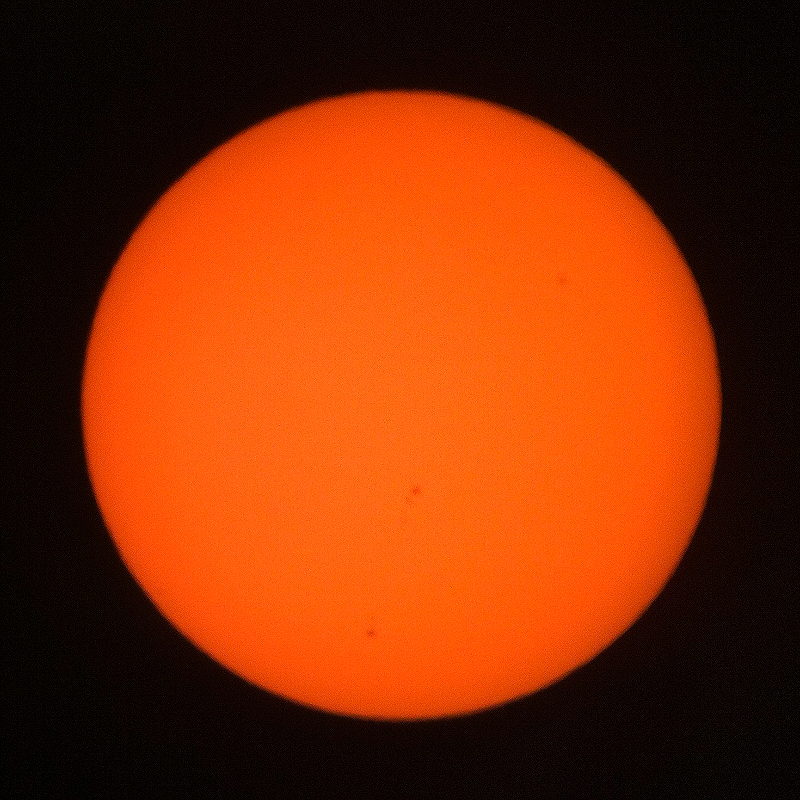

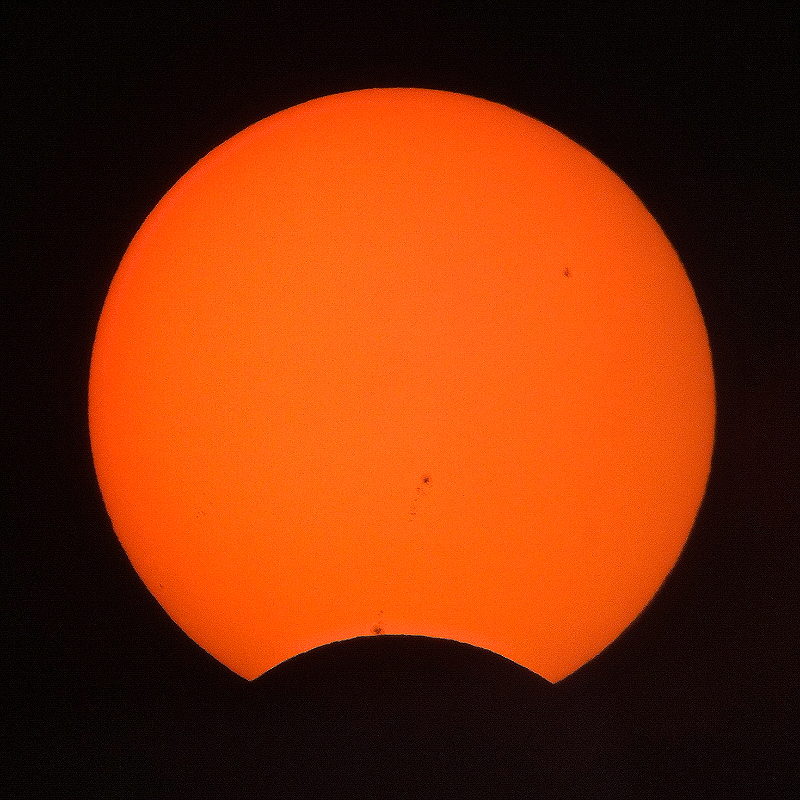

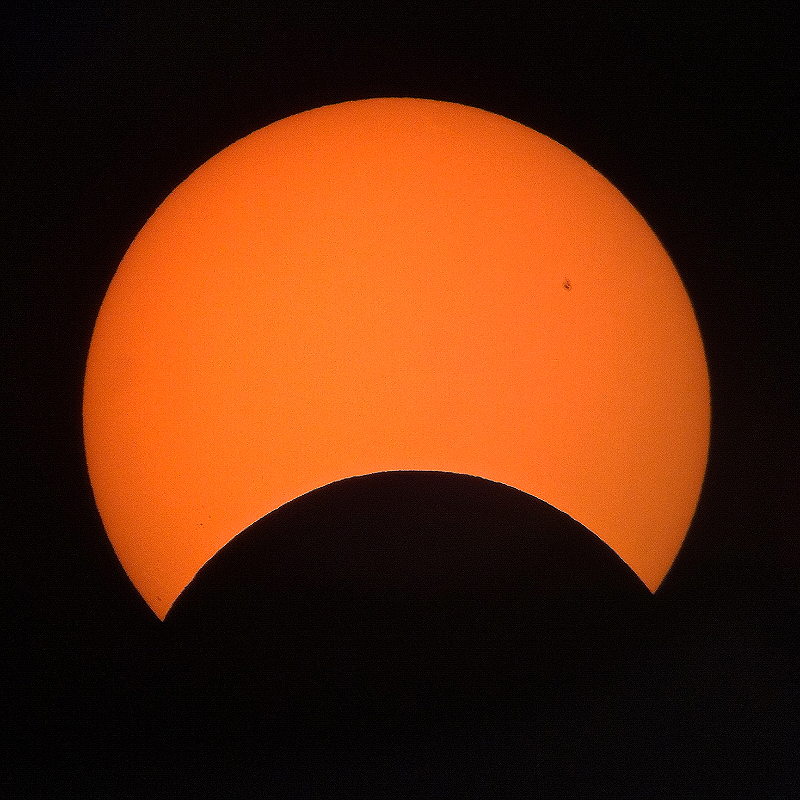
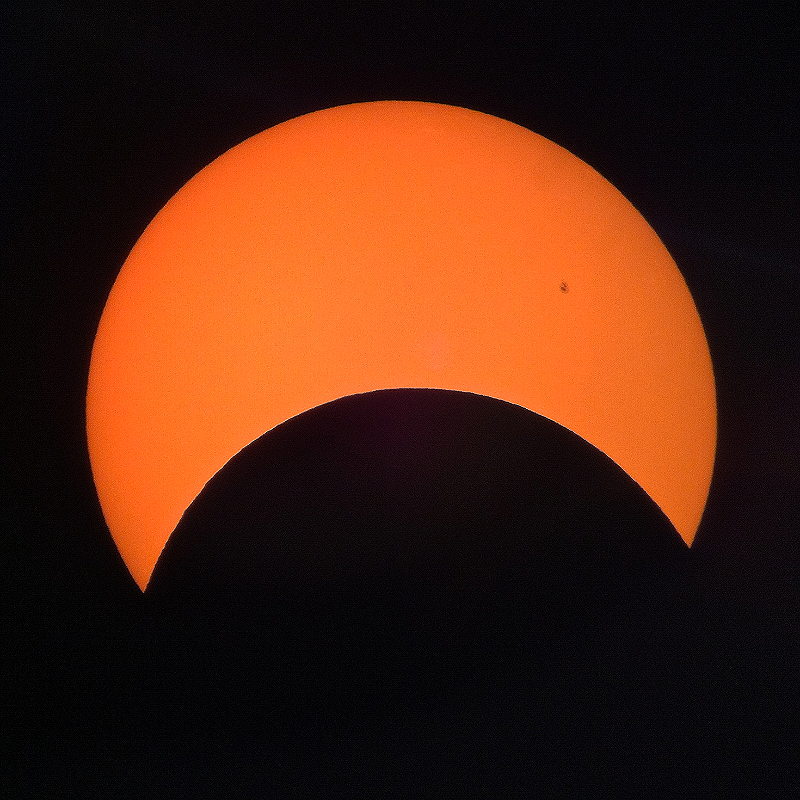
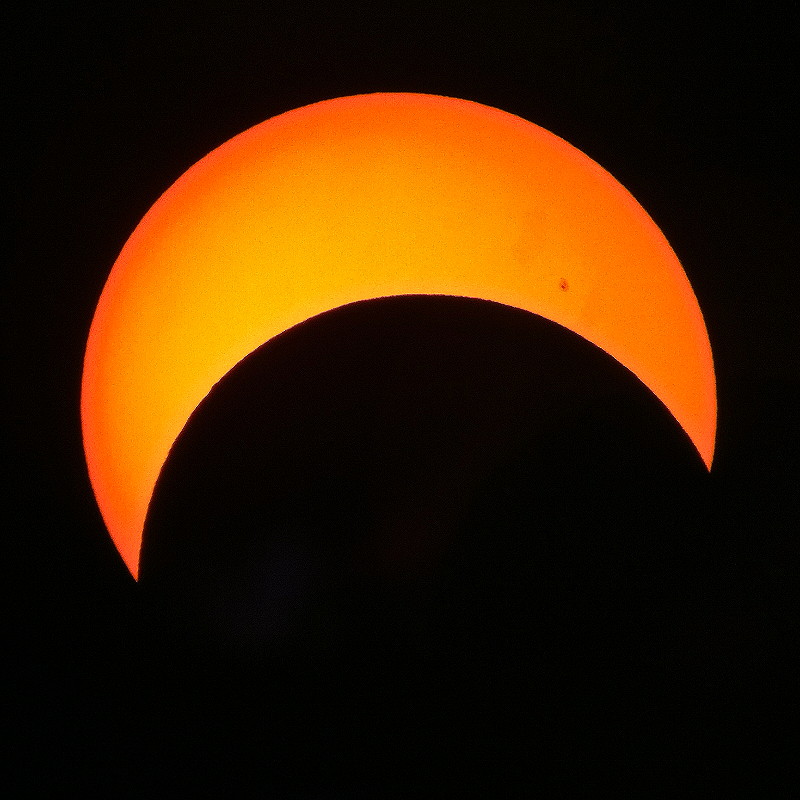
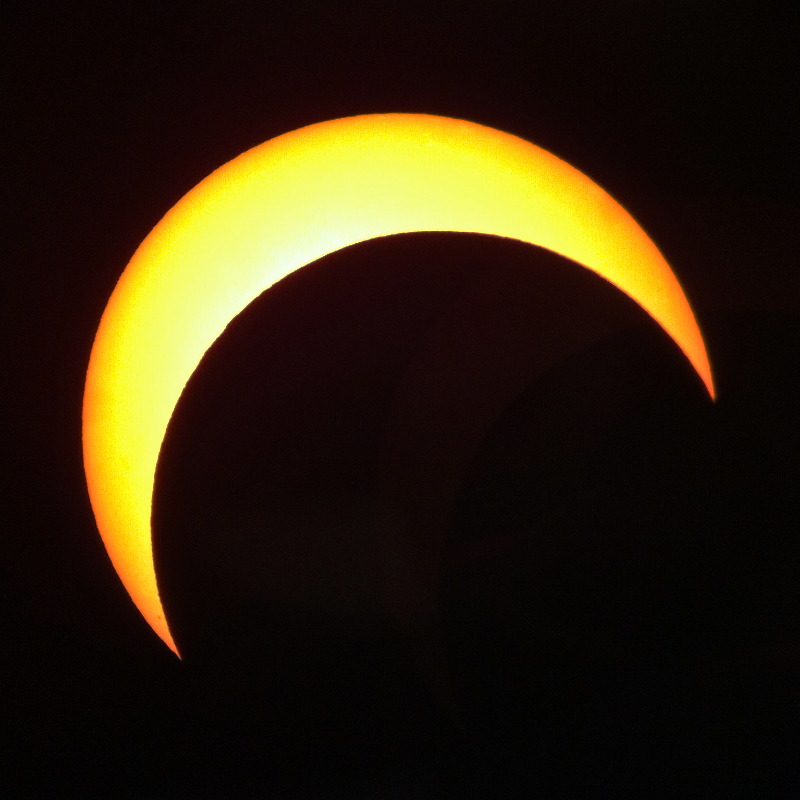
Mid-eclipse (iPhone auto-exposure was having problems)
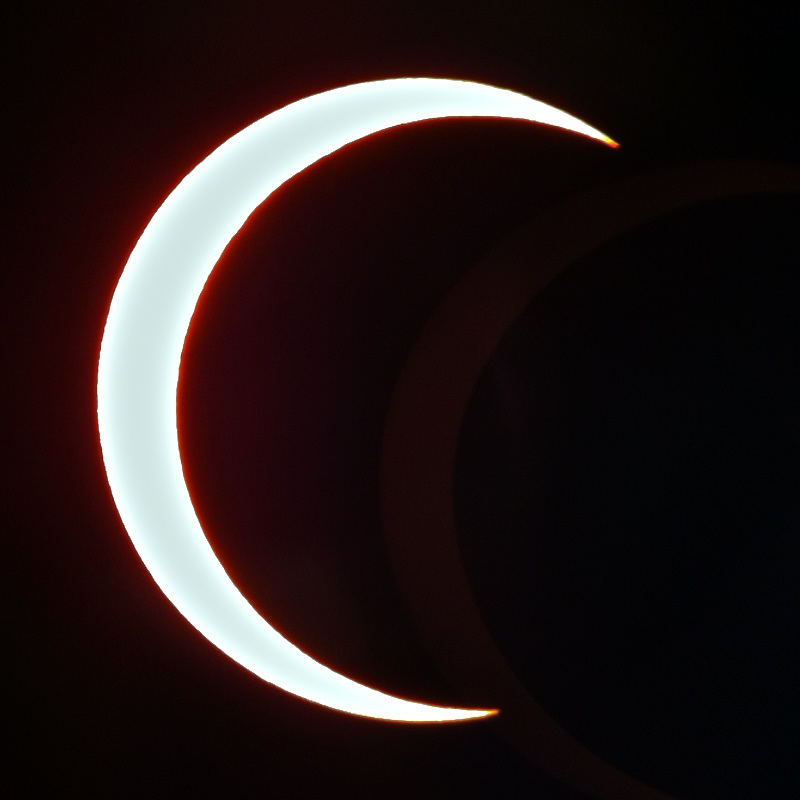
Sun getting low enough in sky to show atmospheric distortion
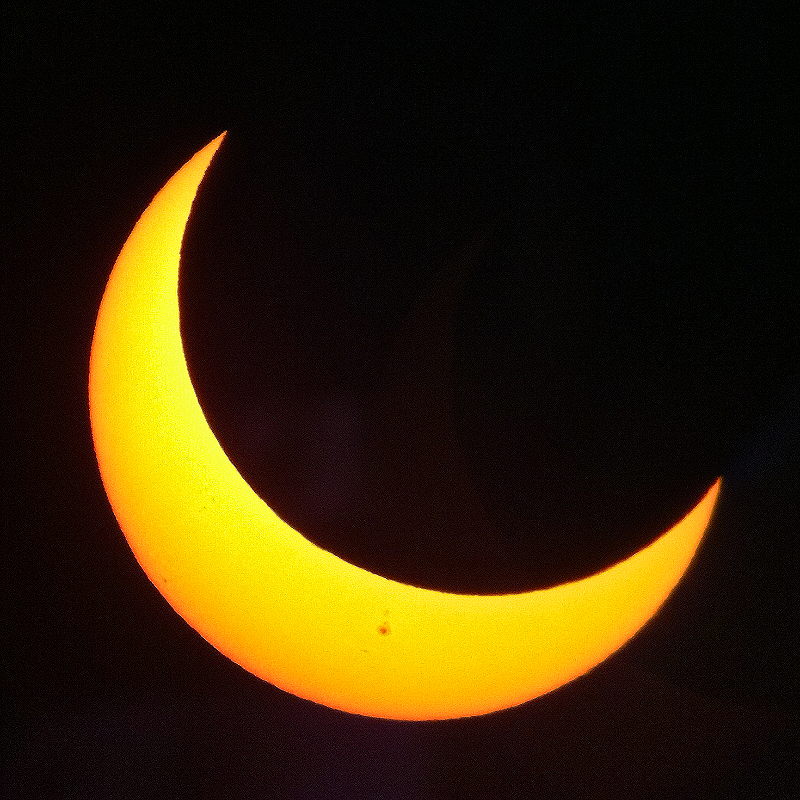
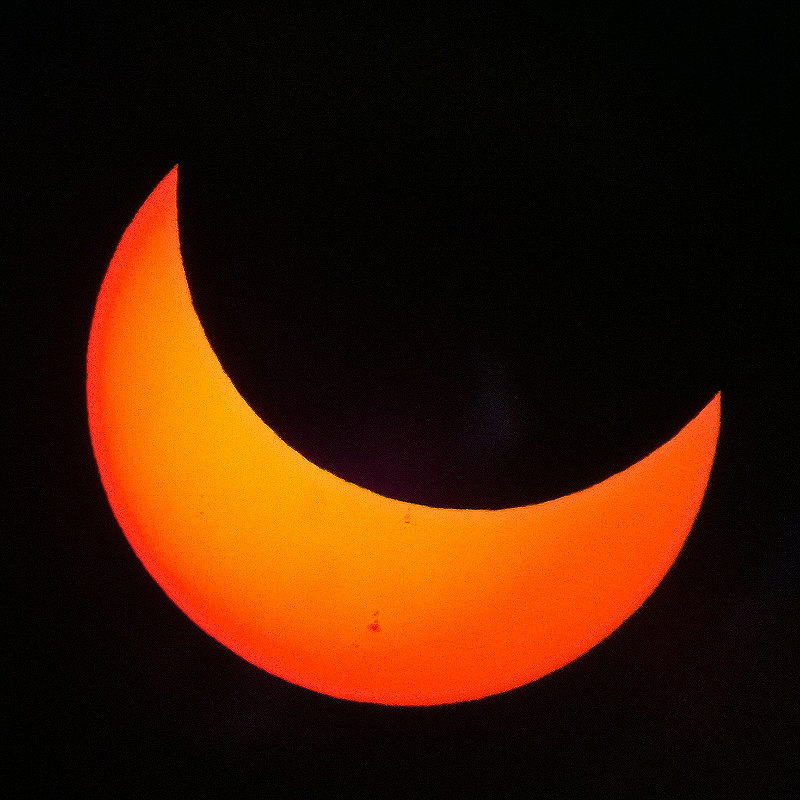
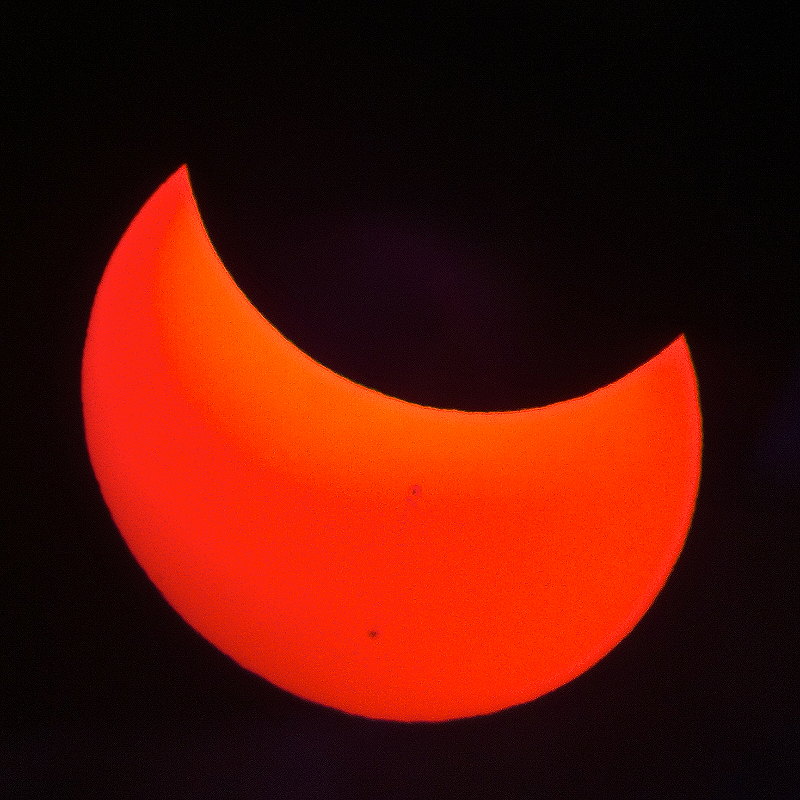
iPad
8" LX200-ACF, afocal 77X, handheld
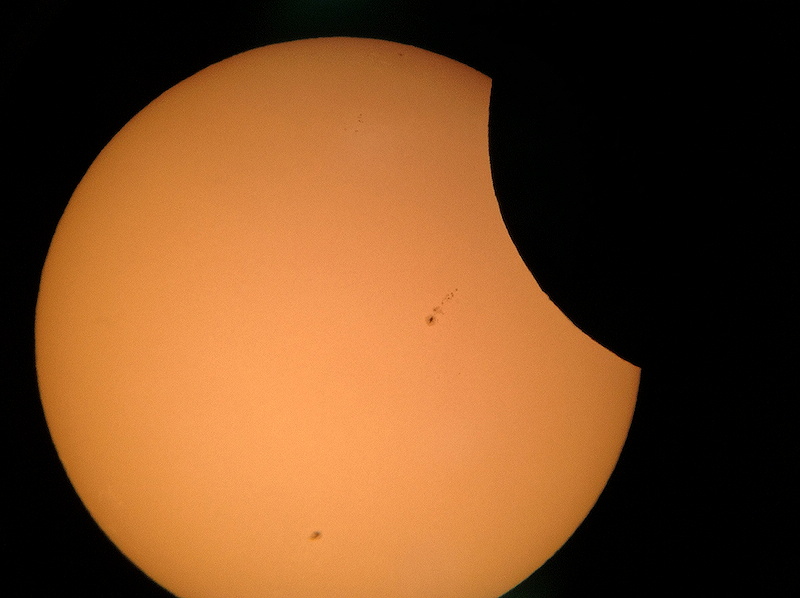
"Pinhole" eclipsed sun images through airholes in cap
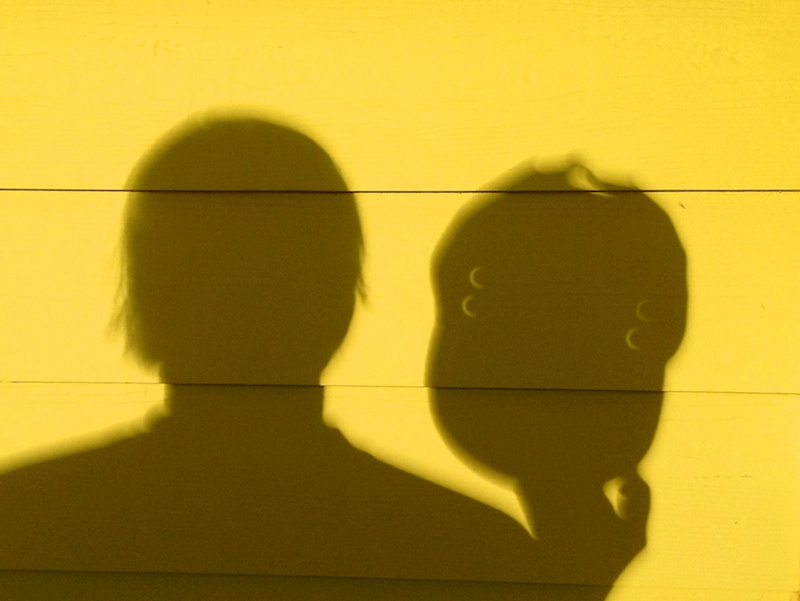
Eclipsed sun images refracted through door glass window and reflected on the wall by a mirror
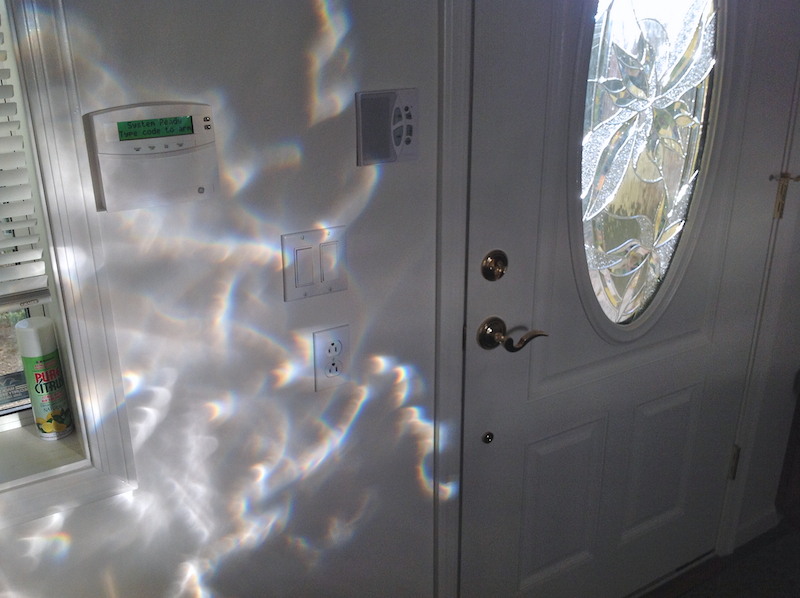
Imaging setup (camera and telescope pointed lower at mid-eclipse)
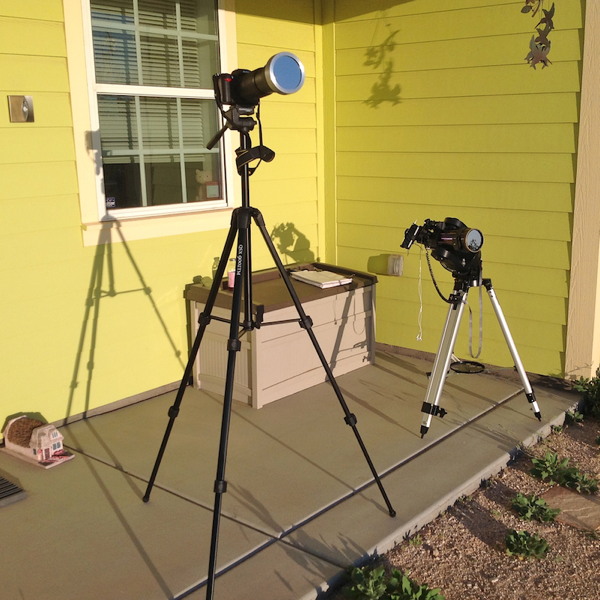
Eclipsed sun images visible in plant shadows
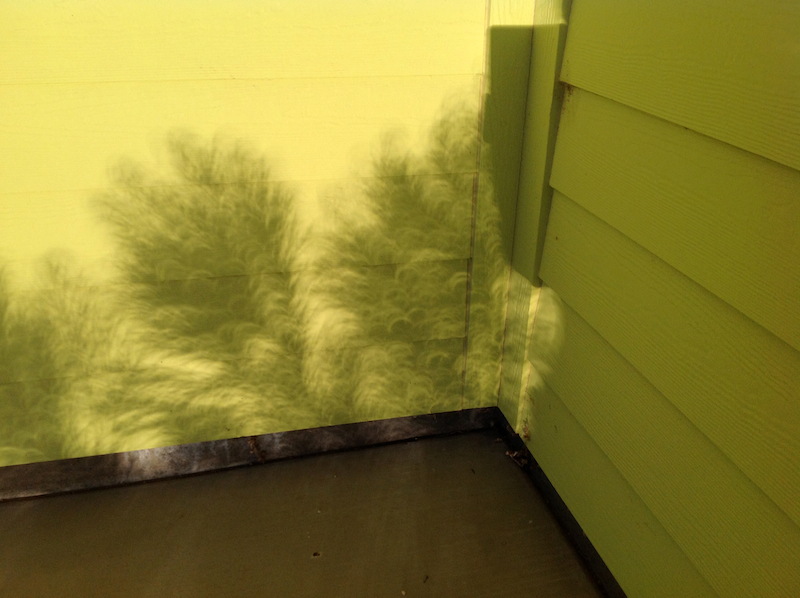
D7000 DSLR
The eclipse begins

Mid-eclipse

Setting sun sequence
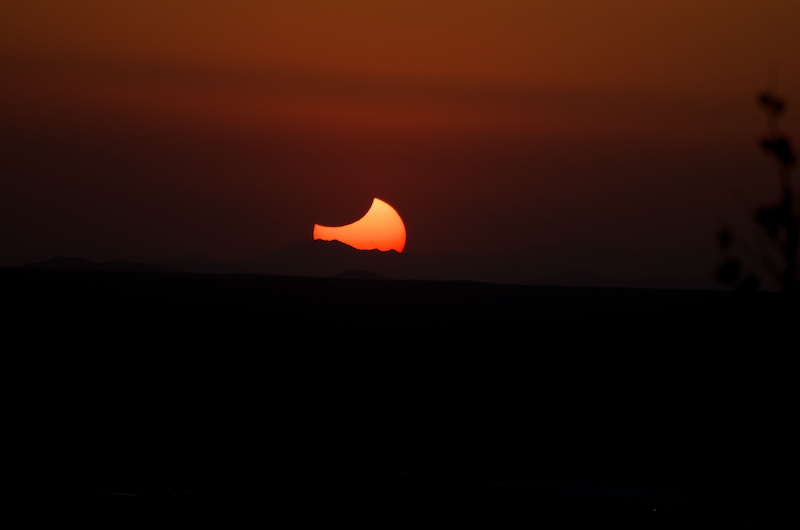
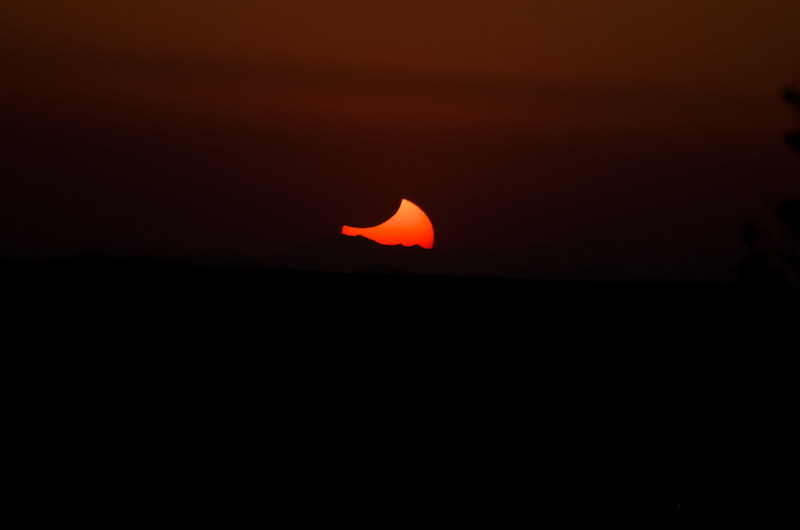
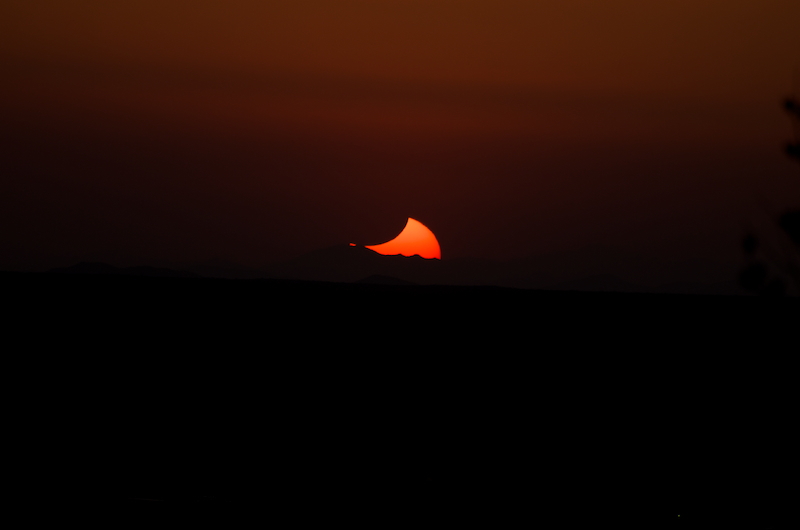
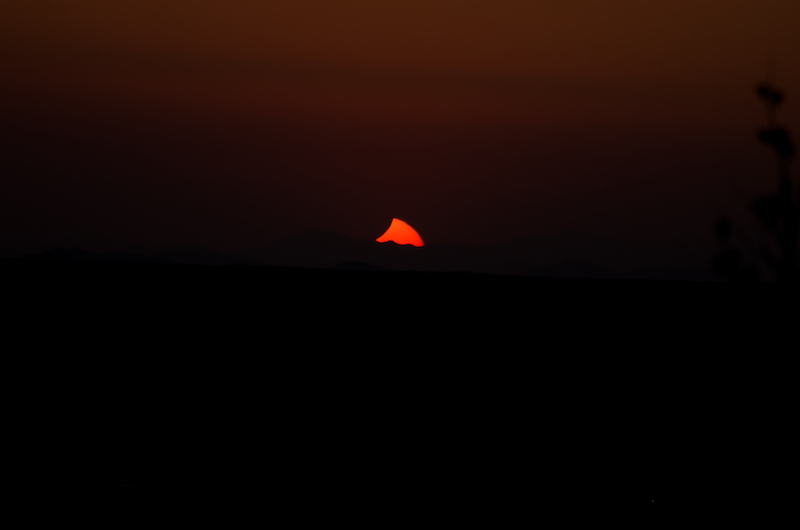
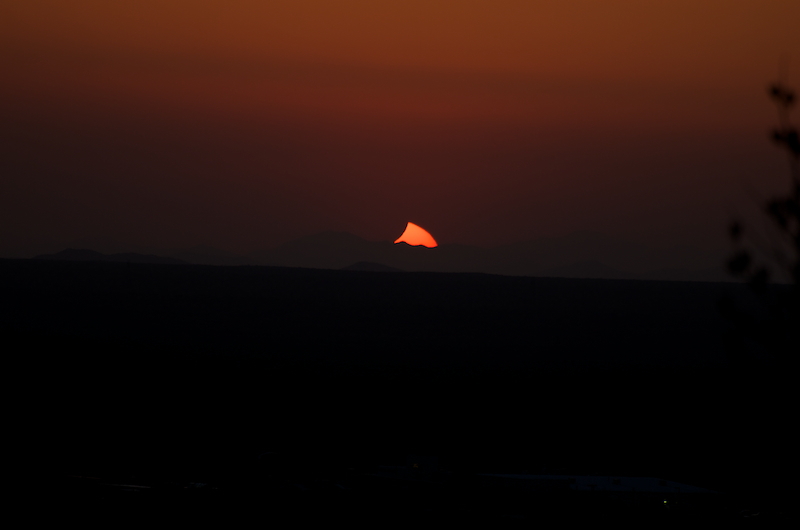

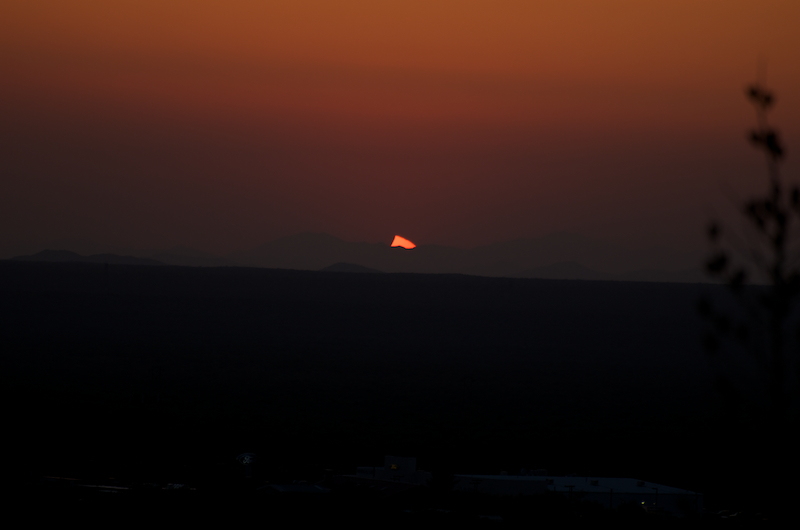
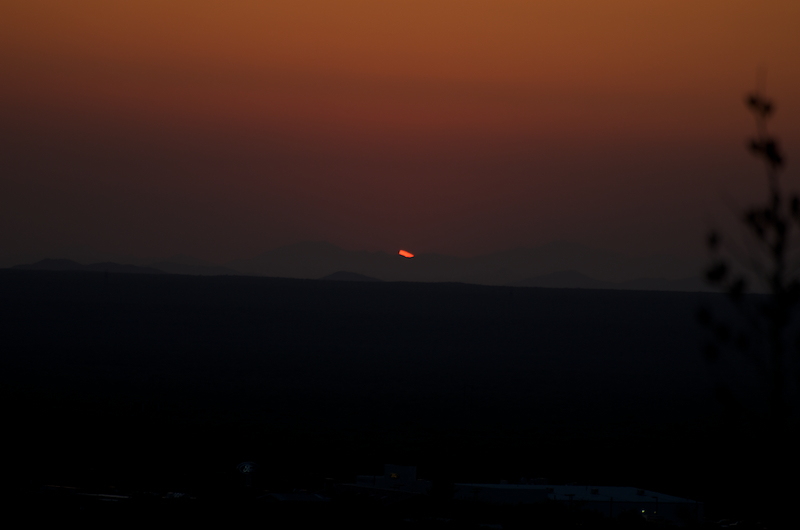
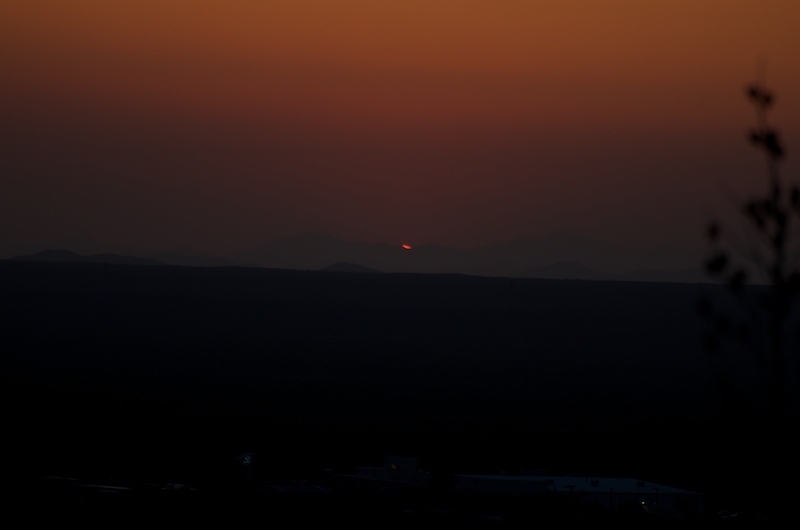
Definitely an enjoyable solar eclipse!
I experienced my first (partial) Solar Eclipse on 20 July 1963. I used my Edmund Scientific 3" Newtonian telescope with a projection screen to view the eclipse. Here's a photo showing the telescope, the sun at mid-eclipse, and some of my friends who came to watch the eclipse:
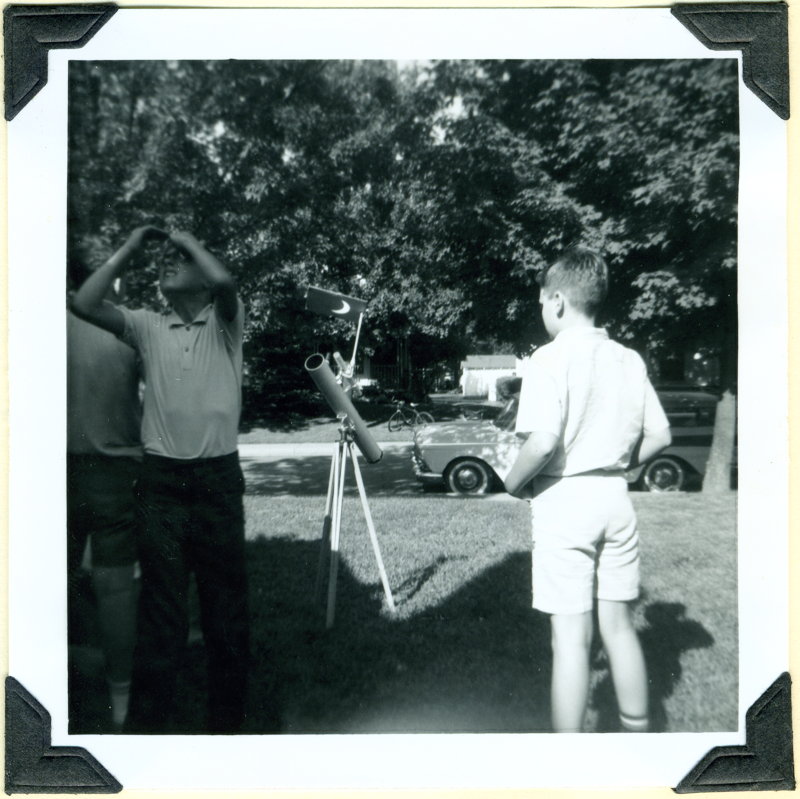
(No, I am not in the photo.)
I prepared a report of the eclipse in 1963 with eclipse information, weather conditions, several photographs, and some newspaper clippings. You can view the scanned report (PDF; a format not available in 1963) here:
"Solar Eclipse July 20 1963" report (full resolution, 161 MB, for those with high speed Internet access)
"Solar Eclipse July 20 1963" report (reduced resolution, 467 KB)
Comments are welcome; use the Comments section below, or you can Email Me. Thanks.
Go to the previous report.
Return to the Cassiopeia Observatory Welcome Page.